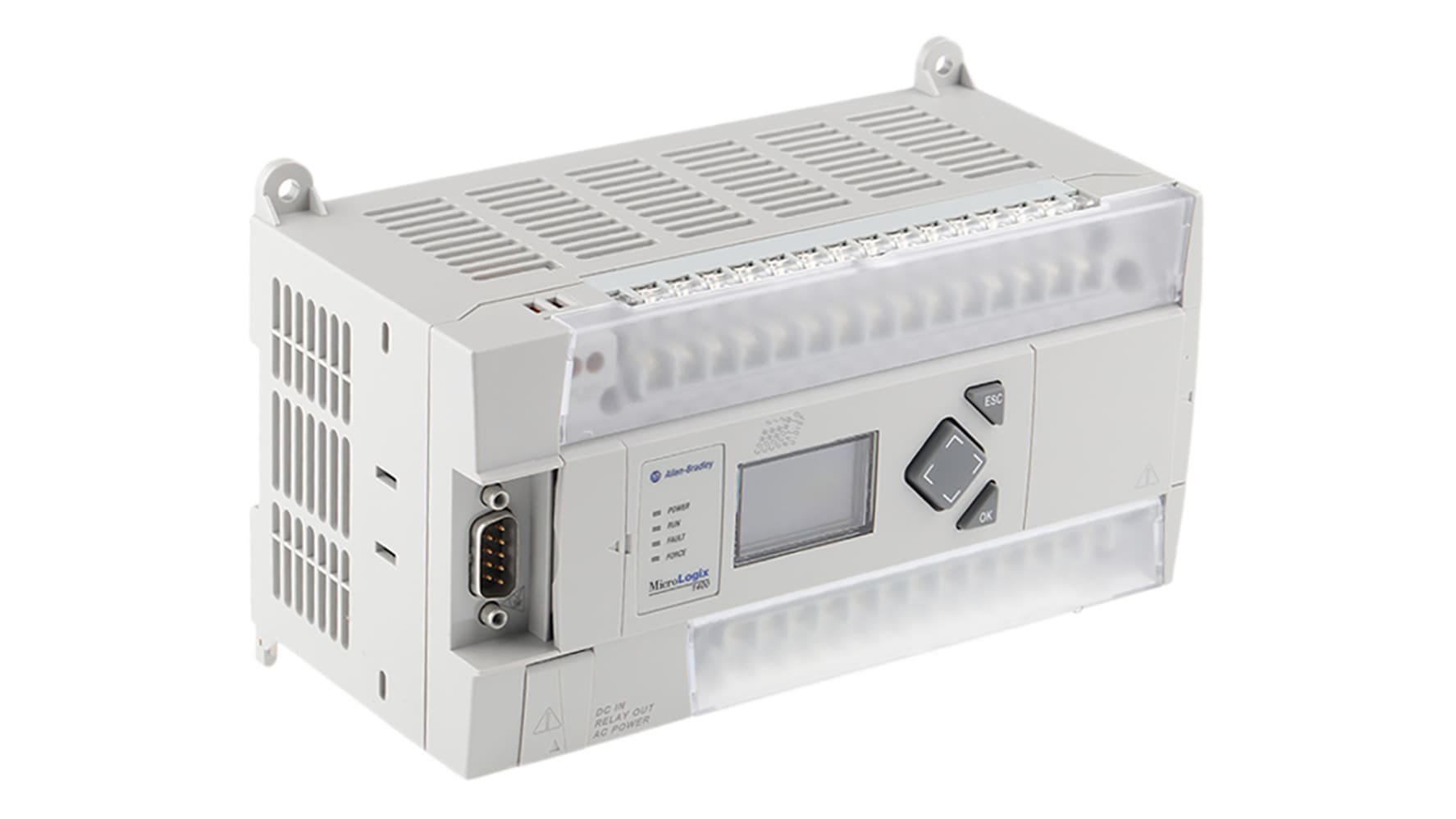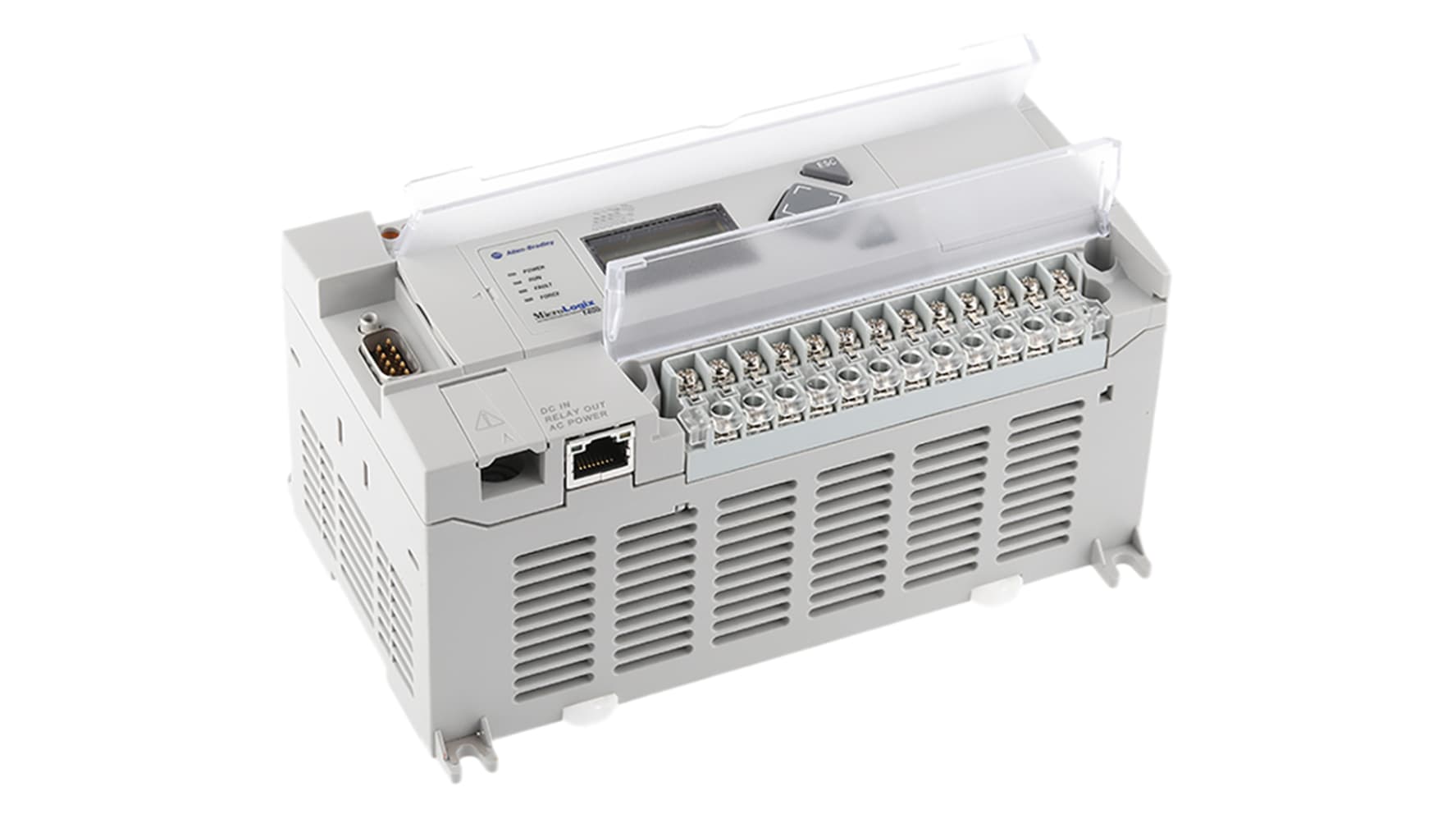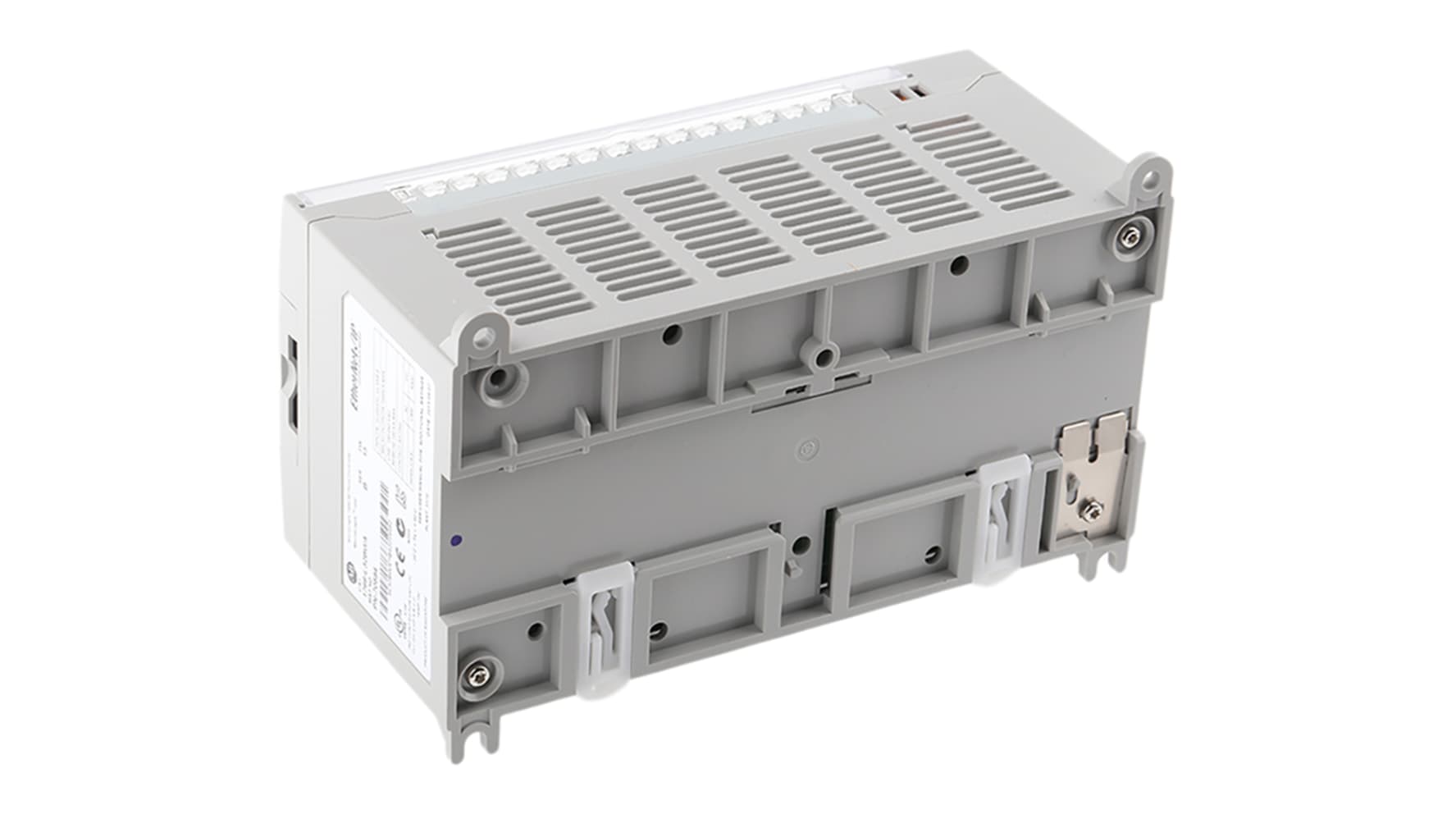Allen Bradley Programmable Logic Controller, DIN Rail Mount, 120 to 240V AC Supply Voltage – 1766-L32BWA
Features and Benefits
• Seven expansion modules that can increase the number of I/O (input/output) ports to 144 for increased functionality
• Wide operating temperature range of -20°C to +60°C for use in demanding environments
• Thermoplastic housing material for improved impact and corrosion resistance
Standards and certifications
• ANSI/ESD S20.20:2014 (American National Standards Institute)
• UL (Underwriters’ Laboratories)
• CE (Conformité Européene)
Does this PLC have any safety features?
Pharmaceutical
HVAC/Building
SCADA (oil and gas, water/waste water, electric power)
Automobile industry
Commercial Machinery, such as vending, industrial washers and dryers
Industrial production, such as material handling, packing, and assembly
Certifications:
BS EN 61340-5-1:2007
What is a PLC?
PLCs are complex computers which automate control processes by using programs to communicate electronic signals to machines and devices. In simplified terms, they are usually comprised of three components: A CPU (Central Processing Unit), which is the brain or processor of the system, Inputs, and Outputs. An input module detects signals from things like switches, sensors, and buttons. This is processed by the CPU, which leads to an output relaying the CPUs instructions to a machine or device. PLC system functions can be expanded by adding extra I/O modules. These devices are widely used in modern industrial automation for controlling machinery, in industries such as packaging, food and beverage production, pharmaceutical, and printing.










